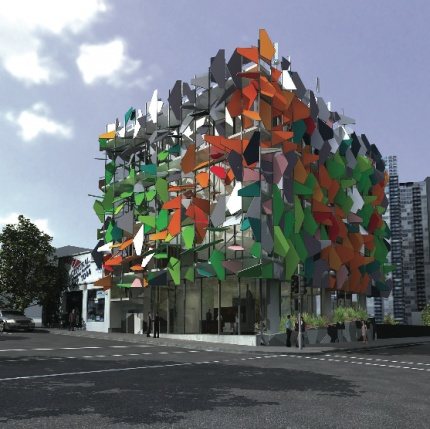
It’s funny, it’s colorful, it’s Pixel Building! Despite the fancy shape and the recent insertion in the top ten list of world’s ugliest buildings (seriously?!), this simple-office-box, designed in 2010 by Australian firm Studio 505, is a sustainability manifesto. The designers describe it like a ‘prototype’, but actually the building has accumulated environmental credibility gaining the highest rating in the world LEED (the award for the Leadership in Energy and Environmental Design) by the United States.
Thanks to a series of sustainable devices, the Pixel Building is the first truly carbon-neutral project of Australia: in fact it’s not only a self-powered building, but it’s able to recover the entire energy used during construction and to provide a significant energy surplus to the neighborhood. Rainwater collectors able to treat it as potable water, special photovoltaic solar panels integrated with devices to capture and optimize sunlight, wind turbines and a 60% less cement and 100% recycle aggregate concrete (the Pixelcrete) are some of the buildings sustainable products, but the most evident element are the sunshades panels clad with a coloured aluminium and metal composite, thin and lightweight.
These panels screen the ambient of sunlight and protect the interior from overheating and glare, leaving an enjoyable feeling to employers and passer-by.



-

AYUB PATEL
commentWould like to see inteiror views....the true test of the project.